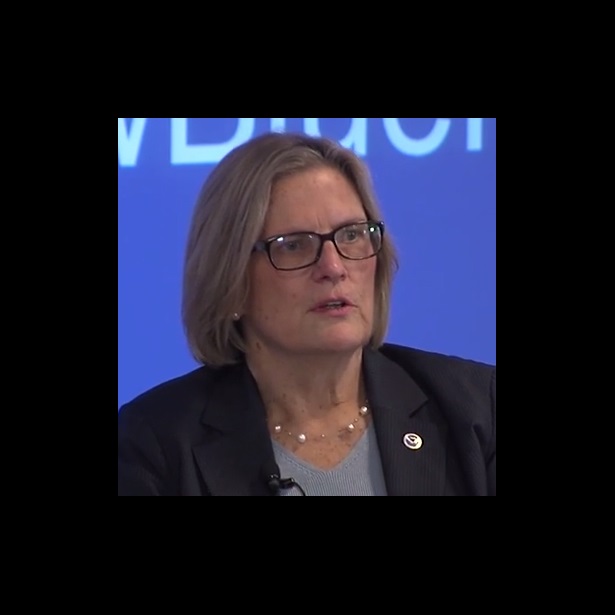A High-Level View of the Importance of Forage Fish
I was fortunate to be part of the audience when Dr. Kathryn Sullivan, head of the National Oceanic and Atmospheric Administration, visited The Pew Charitable Trusts earlier this month. Dr. Sullivan was the first American woman to walk in space, and her appearance at Pew honored the 30th anniversary of this historic event.
From 250 miles up in space, Kathryn Sullivan—a trained oceanographer—had a unique big-picture view of the oceans and the need to steward them wisely.
That’s why it was especially gratifying that Dr. Sullivan closed her talk with a down-to-earth message about the importance of conserving forage fish. Sullivan pointed out that even though little fish like menhaden and sardines do not get a lot respect, they are a crucial link in well-functioning marine ecosystems.
“It’s not restaurant stuff,” she said. “(They are) an unnamed fish in the ‘who-cares’ category. But food webs are food webs; that word ‘web’ matters. If you take large swaths of the center of a food web out of play, you’re really going to alter the ecosystem in fundamental ways.”
Vast schools of forage fish consume tiny plants and animals – called plankton – and then become a critical food source for bigger fish, seabirds, and marine mammals. They are also subject to large-scale fisheries around the world.
The Lenfest Forage Fish Task Force noted in 2012 that forage fish account for more than a third of the total volume of marine fish landings worldwide, with 90 percent turned into fishmeal or oil and used for industrial purposes such as fertilizer or feeding pigs.
As Sullivan pointed out, forage fish also are increasingly used as a food source for aquaculture.
That’s why, contrary to what one might think, farming fish does not necessarily reduce pressure to catch fish in the wild. NOAA has historically supported the development of aquaculture. So I was heartened to hear that Sullivan was keenly aware of the tradeoffs, especially with carnivorous fish such as salmon and tuna. For example, raising one pound of bluefin tuna takes at least 7 pounds of forage fish.
It’s encouraging that the NOAA administrator understands the problem. When Congress reauthorizes the primary law governing U.S. ocean fishing – the Magnuson-Stevens Act – we believe it makes sense to require regional fishery management councils to recognize and account for the critical role forage fish play in ocean food webs. On the Pacific coast, fishery managers are already moving in the right direction.
The Pacific Fishery Management Council is poised to prohibit the development of new fisheries on forage fish that aren’t currently targeted until they have a chance to assess the effect on the rest of the ecosystem as well as existing fisheries that target predators of forage fish, including halibut, lingcod, and salmon.
That makes good sense. And it’s gratifying to hear that, from Dr. Sullivan’s big picture perspective, she knows that little fish are a big deal when it comes to the health of our oceans.












